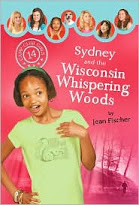Good fiction digs deep into characters’ personalities. When writers go beyond direct narrative to show readers the depth of their characters, it is called indirect characterization. Indirect characterization is a subtle way of showing readers something about a character instead of telling them.
Here are the ways that indirect characterization works:
1. The setting, especially the contents of a character’s personal space (home, office, car, etc.), offers clues about the character’s personality.
When Linda Atkinson opened the front door, an overwhelming stench rushed past her; animal feces, rotting food, the unmistakable scent of mildew and mold. Slowly, carefully, she edged sideways through the narrow path in her aunt’s living room. Boxes packed with who-knows-what, stacked floor to ceiling, thrown precariously atop one another, blocked any light that might have come through the windows. Linda hesitated, fighting a crushing urge to run from the house and not look back.
2. Characters speak about one another giving personality hints to the reader.
“John always was one to procrastinate,” said old Mr. Potter. “He’s a selfish one, if you ask me. Too full of himself.”
3. Characters are what they do, say, and think.
Edward reached down and scratched Toby’s ears. The dog shoved its nose into the palm of Edward’s hand and licked it, wanting more. “You love me, don’t you boy?” said Edward. “You’re the only one who does.”
I wonder, thought Carolyn, if Ashley is really happy. She seems so on the outside, but there’s something about her that’s cynical and cold.
4. Characters are what they are compared to other characters.
Whenever Trevor swung the bat, at best it was a foul ball, but Wilson Mays, he connected almost one-hundred percent of the time.
The next time you read fiction, look for indirect characterization. Then practice using it in your writing.













3 comments:
Thank you, Jean, for sharing this. I will be on the lookout for it! :)
Great explanation. I am a middle school teacher, and now an author as well, and I try to get my students to realize a variety of ways to learn about the characters they read about!
Hello, Lisa.
Thank you for visiting my blog. I started my career as an elementary school teacher. More recently, I was a contributing writer for a series of writing textbooks by Great Source (Pearson). I love finding ways to inspire writers not only to write better, but also to become more discerning readers.
I hope that you'll stop by the blog again.
Jean
Post a Comment